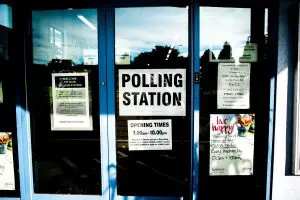The Conservative leadership contest is underway. Rishi Sunak officially stood down after leading the Tories to their worst performance at a general election but is staying on as acting leader until his replacement is chosen. That person will be the sixth Tory leader in less than eight and a half years.
How Do Nominations for Tory Leader Work?[1]
At the beginning, each candidate needs the support of at least 10 MPs to get onto the ballot, including a proposer and seconder. MPs can nominate only one candidate per voting round. Currently, there are 121 Tory MPs, but those who are also whips or sit on the backbench 1922 committee executive cannot nominate a candidate.
The following candidates have received sufficient nominations:
- Kemi Badenoch MP
- James Cleverly MP
- Mel Stride MP
- Priti Patel MP
- Tom Tugendhat MP
- Robert Jenrick MP
How Will the Campaign Unfold?[2]
A three-month campaign will now begin with campaigning intensifying as the confirmed candidates vie for support. They will present their platforms and visions for the party’s future, both to their fellow MPs and to the Conservative Party membership at large.
After Parliament returns from recess in early September, Conservative MPs will start a series of votes to whittle down the candidate list. The MP voting process will take place from 4 September to 11 September and continue until only four candidates remain. In each round, the candidate receiving the fewest votes will be eliminated.
The remaining four candidates will participate in a “beauty parade” during the party conference from 29 September to 2 October. This event will be critical for candidates to present their policies and connect with party members. Precise details of this have yet to be announced.
After the conference, between 9 October and 10 October, MPs will vote again to narrow the field to two final candidates. These two will then be presented to the entire Conservative Party membership, who will vote to select the new leader. The ballot of Party members will be conducted via secure online voting and will close at 5 pm on 31 October.
On 2 November, the new leader of the Conservative Party will be announced, taking over from Rishi Sunak. The new leader will then assume the role of Leader of the Opposition, preparing to lead the party into the next electoral cycle and beyond.
Who Could the Next Tory Leader Be?[3]
The following candidates have been confirmed:
- Kemi Badenoch: The former Secretary of State for Business and Trade.
- James Cleverly: The former Foreign Secretary.
- Mel Stride: The former Chair of the Treasury Select Committee.
- Priti Patel: The former Home Secretary.
- Tom Tugendhat: The former Chair of the Foreign Affairs Select Committee.
- Robert Jenrick: The former Secretary of State for Housing, Communities, and Local Government.
The leadership contest will be crucial in shaping the future direction of the Conservative Party, influencing both its internal dynamics and its appeal to the broader electorate. The leader will face the immediate challenge of unifying the party and crafting a strategy to regain political ground.
BREVIA CONSULTING PROVIDES STRAIGHTFORWARD POLITICAL ADVICE AND SUPPORT TO BUSINESSES AND ORGANISATIONS
Discover how Brevia can help you and your organisation by contacting the Brevia Team on 020 7091 1650 or contact@brevia.co.uk
[1] Conservative Party, ‘Conservative Party Leadership Election 2024’, July 2024, Link
[2] Conservative Party, ‘Conservative Party Leadership Election 2024’, July 2024, Link
[3] Conservative Party, ‘Conservative Party Leadership Election 2024’, July 2024, Link




